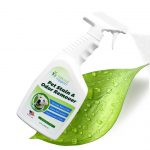As an Affiliate, I may earn from qualified purchases.
1. What is Ferret Proofing?
Ferret-proofing your home is an important aspect of owning ferrets, as they are intelligent and curious animals that require time outside of their cage to play and explore. This article provides tips on how to ferret-proof your home, including getting on your ferret’s level to see things from their perspective, removing temptation instead of just blocking areas, providing enrichment, checking your ferret’s stash, and practicing ferret headcounts. The article also provides a room-by-room guide for ferret-proofing. In the living room, furniture can be a favorite play area for ferrets, and the space under couches and other furniture are optimal hiding spot for them.
2. Ferret Stashing
Ferrets love stealing items and taking them to their favorite hideaway. Like tiny, fluffy little dragons, they are always on the lookout for new items to add to their stash. This can include dangerous items, like chemicals, toxins, and items that could cause an intestinal blockage (like items made of rubber or foam) or items that you can’t lose, like keys, cell phones, and wallets. For this reason, it is important to check their stash often and remove anything problematic.
Get into the habit of performing ferret headcounts often when your little ones are out and about playing. This practice can help a great deal in making sure they are safe and also help you keep tabs on where they are. Ferrets are notorious for finding comfortable little hideaways for their nap time and once they have found a cozy nook or cranny for their naptime you may have to just wait around until they wake up and reappear.
Ferret Proofing Tips – Recap:
- Get on their level
- Remove temptation, don’t just block
- Provide enrichment for engagement and controlled behaviors
- Check their stash for dangerous and important items
- Practice ferret headcounts often
3. Ferret Proofing: A Room-By-Room Guide
As you’re learning (or may have already known), ferrets have the unique ability to find their way into small, unexpected spaces that can easily be overlooked by even the most thoughtful and observant of pet parents. To help set you up for success, we’ve put together a room-by-room breakdown of areas to evaluate and address when ferret-proofing your living space.
4. The Living Room
Living room furniture can be a favorite play area for ferrets. The space under couches, bookcases and other furniture are optimal hiding spots that ferrets will love to dash around under. Always keep location in mind; enterprising ferrets can gain access to windows and other areas if the furniture is too close. Make sure that there is a good distance between items so that a leaping ferret isn’t able to get somewhere they shouldn’t.
Couches
Couches can be very dangerous for ferrets. They often have very thin fabric underneath, which is easy for your ferret to get through. Getting inside your couch can lead to disastrous outcomes, so properly ferret-proofing these classic pieces of furniture is essential.
Tips for ferret-proofing the family couch include:
- With many couches, you can unscrew the legs and set them directly on the floor, preventing your ferret from access.
- If it’s time for a new couch, choose one that sits higher up from the ground, which will limit your ferret from being as interested in spending a lot of time underneath.
- If you are DIY savvy, you can also purchase a thin sheet of plywood or a thick sheet of plastic to cover the bottom of your couch.
NOTE: Recliners, futons, and couches that fold into beds are extremely dangerous and not ferret-friendly items. They can climb into the mechanisms and be severely injured or killed. Rocking chairs should not be in use while your ferrets are out and about.
Bookcases
Bookcases can provide another challenge, so make sure that the lower levels don’t have anything on them that you wouldn’t want to be damaged. Or, you can fill the lower shelves with boxes of ferret-friendly toys for their entertainment. Carefully examine the shelves to make sure that they can’t be scaled by mountain climbing ferrets or utilized to gain access to other cautionary areas. 
Fireplaces
Fireplaces will be a spot of fascination for your ferret friends. They love to dig and explore in the ashes and bits of burned wood. Fireplaces can also get very hot on the outside, so even if fully enclosed, they can cause injury. If your fireplace does not have a door that can be closed, you may want to look into one, or a heavy-duty fire screen to keep access unlikely. Make sure to carefully check the fireplace before lighting a fire and do a ferret head count if your little ones are loose in the room.
Houseplants
Ferrets love to dig, so house plants will be a natural fascination for them. If you want to avoid a mess and possible toxin ingestion, make sure that your houseplants are kept up and away from access on plant stands or counters. Also, be aware of toxic species of plants that you should avoid keeping in your home. Check with your veterinarian if you have any questions about a specific plant.
Toxic Plants to Ferrets Include:
- Aloe vera
- Amaryllis
- Azalea
- Baby’s Breath
- Begonia
- Carnation
- Castor Bean
- Chrysanthemum
- Cyclamen
- Daffodil
- Gladiola
- Hosta
- Ivy
- All Lily Species
- Milkweed
- Morning Glory
- Oleander
- Poinsettia
- Pothos
- Sago Palm
- Tomato Plants
- Tulips
- Narcissus
- Rhododendron
5. Kitchens and Bathrooms
Kitchens and bathrooms present many dangers to ferrets, so you may find it’s better to keep your ferret out of these areas altogether. If your ferret does have access to the kitchen and/or bathroom, here are some important considerations when it comes to ferret-proofing key areas:
Cabinets
Cabinets are a major cause of concern in both the kitchen and bathroom. Ferrets are notorious for getting inside them and finding small nooks and crannies you don’t even realize are there.
- Check cabinet toe kicks for any holes or open spaces that your ferret could squeeze into. Patch any holes that you might find; otherwise, you may run into a situation where you have to wait for your ferret to reappear.
- Lower kitchen and bathroom cabinets and drawers are easily accessible for your ferret and they are often used to keep toxic and dangerous items, like chemicals, medications, and cleaning supplies.
- You can purchase child safety locks to help keep your ferret out, but keep in mind not all child safety locks will work. Anything that allows a small opening will not keep them out. Magnetic locks seem to work, but it’s best to simply relocate these items to higher areas to prevent any accidents. Store bathroom items higher up as well, leaving items like toilet paper, tissues, or sanitary napkins could be torn apart, creating a mess and possible intestinal blockage.

Cabinet drawers can also present dangers to your ferret. Many cabinets do not have their drawers enclosed, so an enterprising ferret can climb up into them. For this reason, any sharp knives or instruments should be moved up onto the counter or kept in upper cabinets to ensure your little one does not get injured. Items like Q-tips, cotton balls, and makeup items need to be stored away from access since ferrets will find them to be wonderful toys but they could cause blockages.
Kitchen Appliances
- Kitchen appliances are areas of concern for your ferret friends. The refrigerator, in particular, presents significant safety concerns for ferrets. Ferrets can get underneath most refrigerators and will gleefully do so when given the opportunity.
- Some refrigerators have adjustable feet that can be lowered to decrease the space and keep your sweet little thief from harm. The greatest concern, however, is the exposed mechanical parts and fans that are on the back of refrigerators. Some may have tubing that is particularly enticing for ferrets interested in chewing. To prevent access to the back of your fridge, make sure that it is pushed against the cabinets or wall to minimize any space and block off any other openings to either side.
- Other appliances like ovens and dishwashers also pose dangers to ferrets. Many ovens have a warming drawer in the bottom that ferrets can get into. Open ovens or dishwashers will also be tempting for your little buddy to explore. Always make sure to check your oven or dishwasher before starting and perform a ferret headcount if your ferrets are out and about.
Bathroom Appliances
Other areas of the bathroom can be dangerous to your curious friend. Toilets and bathtubs present a risk of drowning. Bathroom appliance considerations include:
- Make sure that your toilet lid is kept closed at all times it is not in use.
- Install a heavy lid or toilet safety lock to ensure they don’t open it themselves and make sure that you lock away your plunger and toilet brush.
- Never leave a full bathtub unattended or make sure your ferret is safely in their cage prior to taking a bath.
- Make sure to use a cotton bathmat over one that has rubber non-slick backing. Ferrets love chewing on rubber and this can cause intestinal blockages. Further, remove all mats that have rubber backing in your home.
6. Bedrooms
Bedroom furniture provides all sorts of play areas for your ferrets. Like living room furniture, it should all be carefully inspected and evaluated for “proofing.”
- If you have a bed with a box spring it will have thin fabric on the bottom, similar to your couch. A quick and easy fix is putting a fitted sheet upside down on it for a ferret-friendly barrier. Check this often for any holes at all.
- Nightstands can hold dangerous items for your ferret friends, such as medications, essential oils, items made of silicon or rubber (like mouthguards or CPAP masks), and other valuable items you don’t want to lose. Make sure these items are stored away in closed drawers or in higher cabinets.
- Dresser drawers need to be kept safely closed at all times so that an adventuring ferret isn’t accidentally squashed behind them. As always, check furniture spacing to avoid leaping ferrets from getting to areas they shouldn’t be.

7. Laundry Room
Clothing piles are a favorite spot for ferrets; they love to burrow inside clothes for a cozy nap. Just imagine, they are soft, warm, and smell like their favorite person. It’s not hard to imagine why it would be a popular spot to find a missing ferret.
A sleeping ferret is practically comatose, and it takes quite a bit to get them up and active again. So, it’s not hard to imagine that it would be easy for them to get stepped on while taking a respite in a clothing cocoon, or, even worse, accidentally ending up in the washing machine or dryer.
Get into the habit of stepping around any clothing piles around your house (or even better, use it as an excuse to keep things tidy). Anytime you are doing a load of laundry, be sure to go through each individual piece of clothing carefully if your ferrets are out exploring. Laundry rooms also often have a plethora of detergents and other cleaning supplies, make sure these items are kept out of reach from your inquisitive little friends. And keep your washer and dryer blocked off, so your ferret is unable to get behind them or underneath. In fact, this is another room you may want to keep completely off-limits if possible.
8. Multi-Room Considerations
There are other important general considerations when ferret-proofing your home that can be found all over your house.
Door Gaps
Any doors that have a gap underneath of an inch or more will not keep your ferret out. This can give them access to closets or rooms you’d really rather not have them in.
A quick and easy fix is purchasing and installing a door gap stopper from your local hardware store, try to avoid ones that are made of rubber or silicon if at all possible.
Windows
Windows can be a danger to enterprising ferrets. If you like to have your windows open on nice days, it’s imperative to ensure that your screens are in good condition.
- Check screens for any holes or tears and make sure that they are patched.
- Older window frames may also have cracking or peeling seals and paint. This all should be removed and replaced if your ferret might gain access.
- Sliding windows that don’t stay open reliably shouldn’t be used while your ferrets are out and about. The last thing you want is for them to come crashing down and injure your furry friend!
Heating and Cooling Register Covers
The heater and AC vents around your home should be checked if they are on the floor or lower on the walls. Make sure they are solid and not easily movable. Replace any that may give your ferret access to your vents; otherwise, you’ll have a difficult time retrieving your friend from your ventilation system!





Comments are closed, but trackbacks and pingbacks are open.